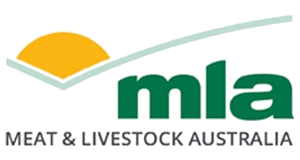Selection and Use of ATP Machine for hygiene monitoring in Australian Meat Processing Plants
| Project start date: | 01 May 2010 |
| Project end date: | 26 May 2011 |
| Publication date: | 01 June 2011 |
| Project status: | Completed |
| Livestock species: | Sheep, Goat, Lamb, Grassfed cattle, Grainfed cattle |
| Relevant regions: | National |
|
Download Report
(0.3 MB)
|
|
Summary
The project aims to improve the operational hygiene of equipment and surfaces in the meat processing industry by utilising a machine which detects and quantifies the amount of Adenosine Tri-Phosphate - ATP - present.
The results from the ATP machine are available within 30 seconds and, if performed with a machine with known variance, provide a highly effective and more timely decision making tool for meat processors for pre-operational hygiene.
Currently the meat industry uses a combination of a visual appraisal of cleanliness and microbiological verification for pre-operational and during operations hygiene. The visual appraisal is immediate but is subjective and not very sensitive - a surface which looks clean may have microbes present and/or biofilms which could harbour bacteria.
Microbiological testing is more objective but only considers bacteria present, not biofilms without bacteria and takes at least 48 hours before a result is available. Thus the current system is too slow, not objective and may not pick up product residues not visible to the naked eye.
ATP machines provide an immediate and accurate result, assuming the machine has been developed properly, and when used in conjunction with targeted microbiologial testing can greatly enhance the verification of plant and equipment hygiene. A further application to the meat industry is in personnel hygiene - i.e provides an immediate measure of the cleanliness of PPE before entering a production room.
The ATP technology is widely used already and machines developed by 3M are already in use throughout the food industry both domestically and internationally.
Despite the benefits, ATP is not widely used in the meat industry. The lack of uptake may be due to lack of awareness or, more likely, because of concerns that it simply adds cost.
ATP machines detect ATP using bioluminescence and provide a reading in Relative Light Units RLU). The RLU scale is not subject to international units such as temperatures and the like and each machine manufacturer sets and validates their own starting value for RLU. The scale of RLU therefore varies from machine to machine. Similarly, a given machine's design can mean different levels accuracy, sensitivity and repeatability. Thus a machine supplier will need to supply information on these parameters in order for industry and regulators to know what is the expected variance in the ATP machine and accommodate this in their decision making.
Objective
Evaluate the use of ATP monitoring as a replacement for standard microbiological testing for hygiene assessment in red meat processing establishments and prepare a submission to AQIS for permission to use ATP technology as an alternative procedure.
Results
Using food residue as an indicator for cleanliness is a similar idea to the use of generic E. coli to assess the level of faecal contamination.
On average, 15-20 ATP bioluminescence swabs may typically be taken per day as part of preoperational inspection, depending on the complexity of the process and extent of equipment and surfaces being cleaned. Many food companies utilise data trending software as an aid to:assess the effectiveness of the cleaning teamsset benchmarksidentify abnormal cleaning eventsimprove the cleaning programidentify trends in procedures and surfacescreate reports for audit
This means that while ATP bioluminescence testing may not necessarily quantify the levels of harmful microorganisms, detecting the presence of ATP indicates that a surface has not been thoroughly cleaned and may either harbour pathogenic organisms or provide a medium for their subsequent growth.
Summary of results:The total results for personnel were much higher than for surfaces particularly for ATP RLU. This may be explained by difficulty in cleaning and sanitising personal equipment e.g. mesh gloves, scabbards. The ATP machine would detect more animal cell ATP on personnel's equipment. The correlation between the ATP RLU and APC results was very low. This is due to the ATP machine detecting ATP in animal as well as bacteria cells whereas the APC only detects bacteria. Therefore by using ATP, there is scope to detect unclean surfaces which can harbour bacteria that are not detected using APC alone.Previous research has reported high correlations between log RLU and log APC counts (>0.9) on plastic and stainless steel surfaces which are devoid of animal and vegetable cells but seeded with bacterial cells. However, these reports acknowledge that the correlation in their studies is only valid for high counts of bacteria, such as >3 log. In the Australian survey, the predominance of low concentrations of bacteria and Not Detected results makes statistical correlations difficult unless there are huge sample numbers.The targeted detection and prevention of high risk specific contaminated items could make a large difference to the hygiene of the plant.
The outcomes of trials conducted in the Australian meat processing industry are:Detailed analyses of ATP and microbial test data showed that the two methods of determining pre-operational hygiene are complementary, not substitutes for each other.Pass/fail/marginal limits could be set arbitrarily, however due to the non-normal distribution of surface ATP results these limits were better set by statistical means.ATP measurements could be used to assist in maximising an establishment's PHI score.
More information
| Project manager: | Ian Jenson |
| Primary researcher: | Symbio Alliance |


